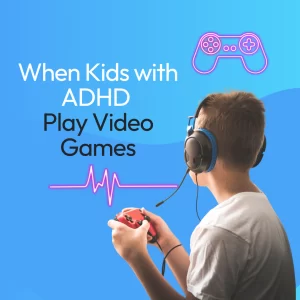“Tell me a little bit about yourself…” is a standard question when meeting a new person in just about any context. Whether it is at a job interview, a party, school, or a first date, we all want to know a little bitabout the person we are with, and that question seems to be a non-confrontational way to give someone else the ability to tell you, just about, whatever they feel like telling you. People often describe themselves in terms of their roles in the world. For example: “I am a nice guy,” or “I am a people person,” “I am a hard worker,”“I am a parent of two kids,” etc., and we clump these little snippets of ourselves together in order to form a larger narrative about who we are, and our place(s) in the world. “That’s just the way I am,”is an often popular sentiment, and the conclusion to the sentence “I am a person who _____ ,“ is the beginning of a statement capable of generating scores of reasonable, and likely accurate, responses. However, this kind of thinking is a slippery slope, and it is pretty easy to understand how: over time we generate dozens of these little self-stories that fuse with our identity and form our persona, defining who we are. More specifically, we are always trying to attempt to become what we say we are. We—the observing-self—are trying to be who we say/think we are—the conceptualized-self. And in the event that, for whatever reason, our own story about ourselves changes we now have to reconcile that change to ourselves and the world around us.
Think about an example of a girl who graduated at the top of her high school class and talked to her friends and family about wanting to become a lawyer. For years she dreamt about practicing law and never hesitated to share her dreams with others, in college she did well in her classes but during her Junior year she arrived at the conclusion that law school was just not a good fit for her. Can you imagine how difficult this conclusion might be for her, especially if she has been wrestling privately with this decision for weeks, months, or even years? How difficult it would be for her to see her friends on summer break and have to explain to them the reasons for her change of career interests. Well, if she is not fused to her conceptualized-self it should not be terribly difficult—after all, people change their minds all the time; however, in building up this conceptualized version of herself, it is possible that attempts to make changes would be met with great resistance. Not only internally, but externally as well. This might lead a person to attempt to maintain congruence between their attachment to their conceptualized self and their observing-self, because the alternative is one where you now have to explain to your parents why you are no longer interested in law school. You have to tell your friends, who may be in the process of applying, that you had a change of heart after years of dreaming. These conversations about your future are something you may or may not fully understand yourself, let alone have a solid enough grasp of to explain or, even more challenging, defend to other people who you know just want the best for you.
In another example, imagine that I believe that I am a kind person. If I believe that, in my heart, I will have a very difficult time dealing with instances where I behave in an unkind way. And, in fact, if I am fused to the conception that I am kind person, I may distort or reinterpret events in order to maintain consistency with my self-story (this may be a common attribution error that is made by people who bully others—‘I couldn’t possibly be a bully, I was just joking around’). Our goal should be one of stepping away from the conceptualized self-image that we have so that we can weaken our attachments and more realistically assess if we are living according to our values. Again, “fusion with the conceptualized self can lead to an attempt to maintain consistency by distorting or reinterpreting events if they seem inconsistent with the self-story” (Hayes, Strosahl, & Wilson, 2012[1]).
So, how do we battle against the tendency to build attachments to the conceptualized versions of ourselves? The first step is to take an open, loving, and accepting perspective of yourself as doing this will not only give you the ability to conscious of your own reality, but it will give you the ability to take the same position for others as well. The second benefit to taking an open perspective of yourself could be that you allow yourself to process changes as they happen in the moment. In the example of the young pre-law student above, if she took and open/accepting perspective, she may have noticed that her values shifting from law, to something else. Trouble comes when those kinds of things sneak up on us out of nowhere and create chaos in a place where we thought was organization and structure. The second way to make congruent the relationship between the observing-self, and the conceptualized-self is to align you actions with a set of values that you create for yourself. In that case, your observing-self can always look at your conceptualized-self and consider: do my actions move me closer to, or further from, my valued endpoint? We could even use this strategy to better understand if we are making the “right” choices or not, based on whether our choices produce an outcome that we find acceptable. Finally, self-as-context is deeply related to mindfulness and it might be helpful to try an activity: if you are concerned that your conceptualized-self is dominating your observing-self, close your eyes and simply notice your thoughts. Notice where they are around/inside/above/below you, notice if they are pictures, sounds, or a movie playing along in your mind, bring your attention to the fact that your thoughts are ‘over there’ and youare the one who is observing them. Now, bring your attention to how you are sitting, noticing what you can see, smell, taste, and hear. At each of those points, bring your attention to the fact that you are noticing (e.g., notice how you are sitting, and as you do, be aware that you are noticing).
Bringing ourselves into the present moment in a mindful and conscious way will help us to remain oriented to our observing-self, and to remain de-fused from our conceptualized-self. After all, it is ok to remain flexible while we develop our Values, and attempt to live meaningful lives.
[1]Hayes, S.C., Strosahl, K.D., & Wilson, K.G. (2012). Acceptance and Commitment Therapy: The process and practice of mindful change. New York, NY: The Guilford Press.



